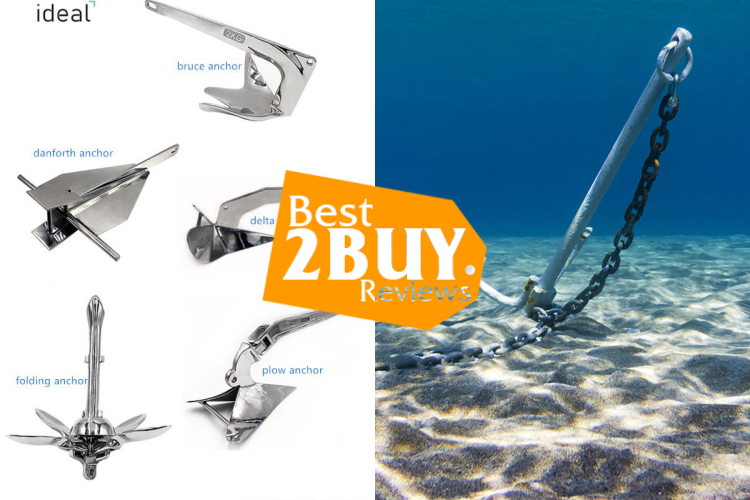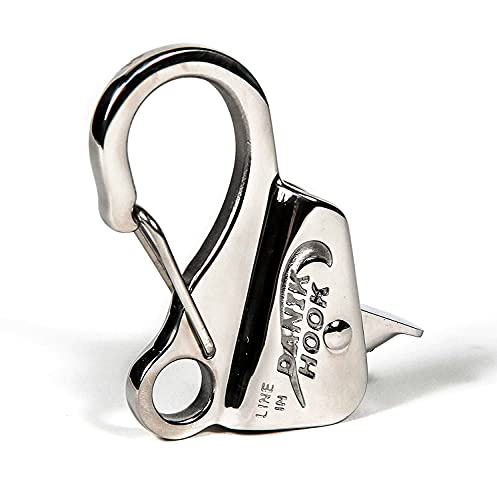How to Choose the Boat Anchors
Boat Anchors: A Comprehensive Guide to Choosing The Right One

- 1. Boat Anchors: A Comprehensive Guide to Choosing The Right One
- 1.1. What Is A Boat Anchor?
- 1.2. Anchor Features and Components
- 1.3. Anchor Styles
- 1.4. Choosing The Right Boat Anchors
- 1.4.1. Holding Power
- 1.4.2. Weight
- 1.4.3. Bottom Conditions
- 1.4.4. Anchor Type
- 1.4.5. Retrieval Ease
- 1.4.6. Material and Construction
- 1.5. Best Practices for Anchoring
- 1.6. Conclusion
Boat anchors hold a pivotal significance in maritime endeavors, acting as the reliable connection between a watercraft and the ocean floor. Regardless of your level of expertise, whether you're an experienced sailor or a newcomer to boating, it is imperative to grasp the diverse kinds of boat anchors and their correct utilization to ensure a secure and pleasurable maritime adventure. This piece will delve into the realm of boat anchors, examining their varieties, characteristics, and recommended techniques for anchoring.
What Is A Boat Anchor?
A boat anchor serves the purpose of stabilizing a watercraft in a specific location by embedding itself into the seabed or lake bottom. This crucial tool is employed by boaters, sailors, and fishermen to secure their vessels in a fixed position when not in motion.
Typically, a boat anchor features a fundamental design consisting of a substantial metal object equipped with one or more flukes, which are pointed projections designed to penetrate the bottom surface. The anchor is connected to the boat through a rope or chain referred to as the anchor rode. Upon being dropped into the water and reaching the seabed, the anchor's weight, combined with the fluke design, facilitates a secure grip on the bottom, preventing the boat from drifting.
Anchor Features and Components
- Material: Anchors are typically made of materials like galvanized steel or aluminum to resist corrosion in saltwater environments.
- Flukes or Blades: The shape and number of flukes or blades influence the anchor's holding power and effectiveness in different bottom types.
- Shank: The shank is the stem connecting the crown to the anchor's bottom. It affects the anchor's ability to set and hold.
- Stock: The stock is a bar perpendicular to the shank that helps the anchor rotate and set properly.
- Rode: The rode is the combination of anchor line and chain connecting the boat to the anchor. The chain provides weight to help the anchor set and reduces wear on the anchor line.
Anchor Styles
Fluke
For boats under 30 feet in length, Danforth, or fluke-style anchors, are the preferred choice. Despite their compact size, fluke anchors offer ample holding power. Their flat-folding design facilitates easy storage in compartments. The anchor arm, or stock, embeds itself into the ground once the pointed flukes secure a grip, making them well-suited for hard sand and mud. However, they are not suitable for rocky or slick, grassy bottoms, as loose mud or clay may impede their penetration.
Navy
To address the limitations of fluke anchors, Navy anchors come into play. With long stocks and distinctive arks and flukes, they excel in environments with heavy grass, weeds, and rocky terrain. The elongated design allows for effective anchoring by gripping crevices.
Grappling
Although grappling anchors may lack holding power, their compact size and design compensate for it. Ideal for smaller vessels like jon boats, canoes, kayaks, and aluminum skiffs, grappling anchors can be conveniently folded for storage in tight spaces.
Plow
With a low center of gravity and self-righting geometry, plow anchors set quickly and securely. Their ability to reset easily in response to wind or tide shifts makes them suitable for rocky bottoms, weeds, and grass. While not recommended for soft bottoms, plow anchors excel in providing high holding power, making them ideal for windy conditions in open water.
Claw
Modeled after oil-rig anchors in turbulent waters, claw anchors offer impressive holding power relative to their size. Designed to set effortlessly and hold in various bottoms, they excel in windy conditions. Claw anchors are the preferred choice for large, open bodies of water, ensuring stability even when the boat swings.
Mushroom
Best suited for soft bottoms, mushroom anchors are ideal for canoes, kayaks, and jon boats. They create penetration through suction and may serve as a secondary anchor but are not recommended as the primary anchor.
Choosing The Right Boat Anchors
Selecting the appropriate boat anchor is essential to ensure the safety and stability of your vessel. Various factors should be carefully evaluated in the decision-making process. Below are key considerations to keep in mind when choosing a boat anchor:
Holding Power
While the weight of an anchor may seem like the most important factor, holding power is a more accurate measure of its effectiveness. Holding power is determined by the amount of pull force an anchor can withstand to keep the boat in place. This factor is influenced by environmental conditions such as wind speed. For example, a 20-foot boat in winds up to 20 mph requires a holding power of 90 pounds, while a 25-foot boat under similar conditions needs a holding power of 125 pounds. Relying solely on anchor weight can be misleading, as even a 10-pound anchor may not provide sufficient holding power for a 20-foot boat.
Weight
Choosing the right weight for your anchor is crucial. While a smaller anchor may be suitable for calm waters and short anchorages, a larger, heavier anchor is essential for emergency situations in windy conditions. It's also advisable to carry two anchors of different weights – a smaller "lunch hook" for short stops and a larger "working anchor" for overnight trips or gusty winds. Using two anchor styles can be beneficial, particularly for high-profile boats like pontoons.
Bottom Conditions
An anchor's holding power and weight are only effective if it can penetrate the bottom successfully. Different anchors perform better in specific bottom conditions. Hard sand bottoms offer consistent holding power, while mud poses a challenge as the anchor must penetrate to reach a harder secondary bottom material. In grassy bottoms, anchor weight becomes more critical than design.
Anchor Type
There are various anchor types, each with its advantages and disadvantages. Danforth anchors are suitable for sandy bottoms, Plow anchors are versatile and work well in different conditions, Claw anchors provide a strong grip, and Mushroom anchors are space-saving but may have limitations in holding power. Choosing the right anchor type depends on your boating needs and the types of waters you frequent.
Retrieval Ease
Consider the ease of retrieving the anchor, especially if you plan on anchoring frequently. Some anchors are designed for easy retrieval from the seabed, ensuring a smoother experience for boaters. The ease of retrieval becomes particularly important during adverse weather conditions or when time is of the essence.
Material and Construction
An anchor's material and construction play a significant role in its durability and performance. Stainless steel anchors resist corrosion, making them suitable for saltwater environments. High-quality construction ensures that the anchor can withstand the stresses of anchoring and provides long-term reliability.
Best Practices for Anchoring
- Setting the Anchor: Slowly approach the desired anchoring spot, allowing the anchor to gently drop to the seabed. Allow the boat to drift back while releasing the rode gradually, allowing the anchor to set.
- Scope: Use the right amount of scope (the ratio of rode length to water depth) for the anchoring conditions. A common rule of thumb is a 7:1 scope in normal conditions and up to 10:1 in stormy weather.
- Monitoring and Adjusting: Regularly check the anchor's position and be prepared to adjust it if necessary, especially in changing weather or tidal conditions.
Conclusion
Anchor for boats is an essential equipment that seafarers cannot do without, offering stability and assurance while navigating through expansive waters. Selecting the appropriate anchor, comprehending its characteristics, and honing proper anchoring methods are crucial for ensuring a secure and pleasant boating venture. By acquiring expertise in the skill of anchoring, sailors can boldly venture into uncharted destinations and traverse the extensive and enchanting realm of maritime exploits.









